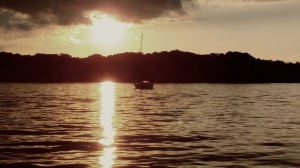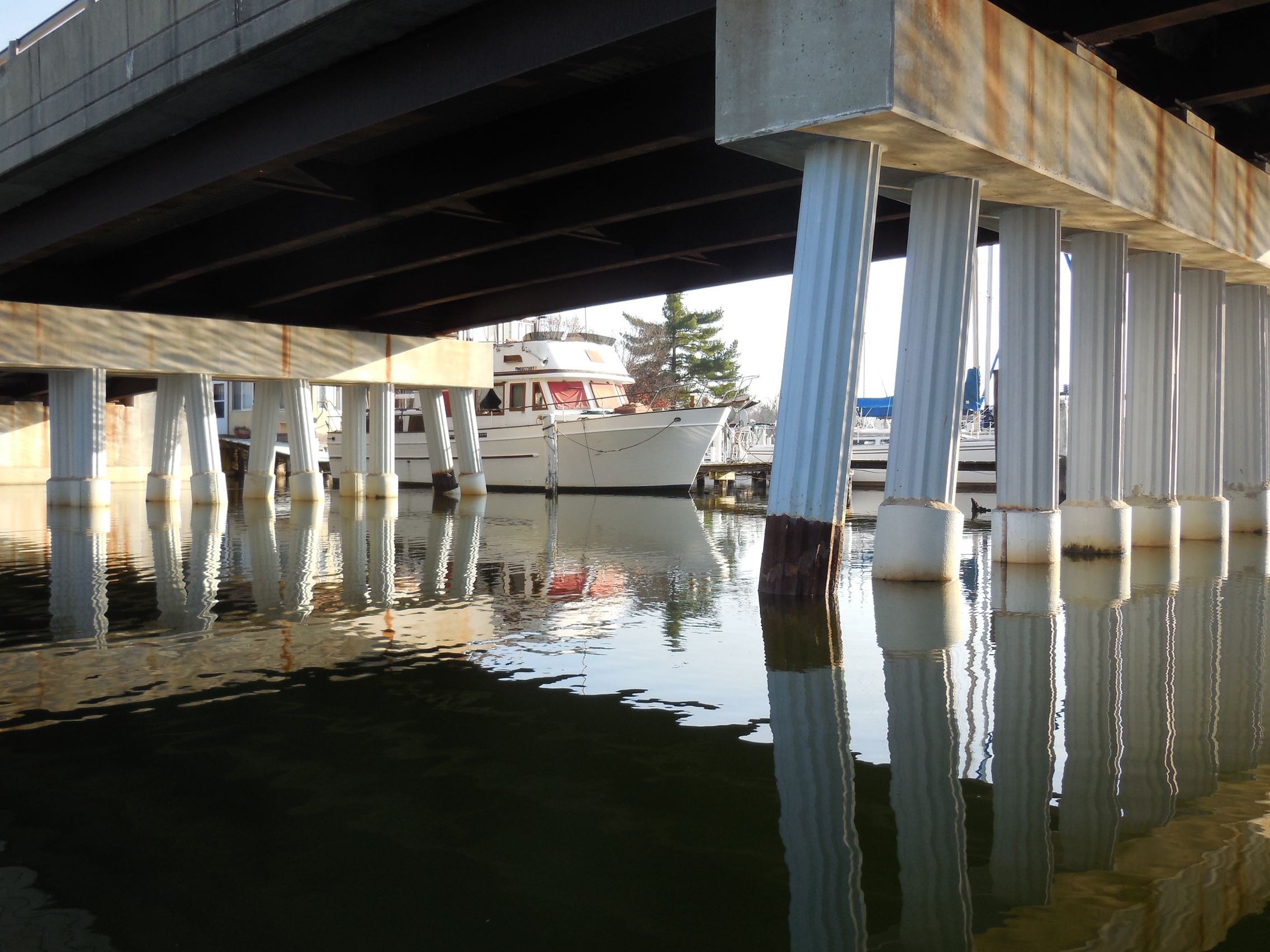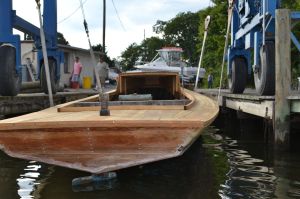Next morning Inyanga castoff from our raft after goodbyes and motored out of the harbor. They had a little farther to go than we did and wanted to get an earlier start. We finished breakfast and tidied up the boat, then raised the anchor for the last time, and picked our way out of the anchorage. Once in the bay, we pointed the bow south and forged on toward Deale.
We had light breezes on the nose, of course. Prevailing winds this time of year are southerlies here in the bay, and all along the Atlantic coast, but it helped being in protected waters, as the chop was minimal and the motion of the boat easy.

We’re about five miles north of the bay bridge at Annapolis
As we drew closer to the bridge, it grew in height and breadth. Ruth took a several photos of as we approached and passed through.



South of the bridge, we were really in the home stretch. Just 12 miles to go, and everyone of them familiar. The markers for Rockhold Creek hove into sight, and we aimed for the channel.

Travelling up the creek to our home slip, as we have done so many times seemed unreal after our odyssey of approximately 1000 miles, 10 weeks of travel afloat, and countless anchorages.
It’s good to be home! We will savour the conveniences of living on land now that we have spent the summer without them, and we will enjoy the comfort of routine – so starkly different to living life aboard a sailboat.
I don’t think we will undertake so long a trip on the boat again. There are places to go, and things we would love to do on the water, but I think a chartered boat for a week would satisfy those desires. Places like the Caribbean that we would like to sail may be best done through a charter company. We will still have adventures around the Chesapeake, and there are many places here we haven’t explored, but we’ve experienced living aboard for an extended period now, and I think that has satisfied our desire.
We love the cruising condition of the boat now. She’s more capable than ever, and perfectly equipped to enjoy cruising for weeks at a time, or just day-sailing.












































